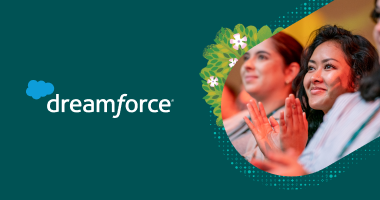OpenAI is an AI research and deployment company that’s revolutionizing how the world perceives artificial intelligence. They’re the creators behind the wildly popular ChatGPT, a versatile AI chatbot that can, amongst many things, compose content and answer questions in a conversational manner.
ChatGPT was released in November 2022 and quickly became a global sensation that millions use every day to work more efficiently.
Throughout this influx of customers and growth to their business, OpenAI has relied on Slack for their collaboration needs. Slack has become the productivity platform for OpenAI — a place where they can communicate securely with customers, accelerate projects and further their mission of ensuring that artificial intelligence benefits all of humanity.
Using Slack Connect to collaborate directly with customers
Slack Connect allows OpenAI to move conversations with customers out of over-stuffed inboxes and into interactive channels. The company has over 170 Slack Connect channels and has sent over five million messages since becoming a Slack customer in 2018.
Collaborating within channels empowers OpenAI to find faster, more accurate solutions for customer needs.
“Slack Connect is a huge part of our customer experience,” says Anna Tifft, Account Manager at OpenAI. “ What I love about working in Slack is it removes me as a bottleneck. It gives me the ability to bring in my colleagues when a customer has a question that is outside of my purview, or I think someone else can answer more effectively or more quickly than I can.”
In addition to Slack, OpenAI is exploring using other Salesforce products to improve the customer experience. Integrating data from Service and Sales Clouds into Slack would allow OpenAI to access a 360-degree view of the customer right where they’re working.
“Working with Salesforce and having all of my customer data in one place is huge,” Tifft says. “I’m constantly transitioning between different conversations as I’m moving things forward for my customers. And if I were operating each of those things within a different ecosystem, it would be untenable. So it’s critical that I’m able to execute most of the needs of my customers within one holistic environment with Salesforce.”

Streamlining work with the ChatGPT for Slack app
OpenAI’s brand new ChatGPT for Slack app harnesses the power of ChatGPT and embeds it directly into Slack channels.
With ChatGPT for Slack, users no longer have to toggle between the two services. Instead, they can ask ChatGPT questions right inside Slack and get the answers they need in seconds.
“I think ChatGPT for Slack is exciting because it can really help you at work,” says Simón Posada-Fishman, Solutions Engineer at OpenAI. “It can help you understand content, read through long threads and answer questions quickly. You can think of it as a second brain that’s going to be there in Slack with you, and you can rely on it instantly to help you go through your work and be more productive.”
Posada-Fishman used Slack’s platform to develop the ChatGPT for Slack app. It started as a tool for OpenAI’s internal team, but now they’re opening it up to all Slack customers.
“I think it’s really fun to build things within Slack,” Posada-Fishman says, “I think the Slack platform provides a lot of capabilities out of the box, and it was actually way easier than I expected it to be. I would encourage people out there to build Slack apps. It was a fun and quick experience”
With the ChatGPT for Slack app, you may never need to leave Slack to get a question answered. The integration brings all the resources, people and tools you need to get your questions answered in one space.
ChatGPT can even answer small questions you may not know, like what different acronyms stand for. Instead of having to pull up a new Google window, ChatGPT can answer for you within Slack so you can continue working with no hiccups. This reduces the burden on employees to remember small details and enables them to return to the work that matters.
The ChatGPT for Slack app offers AI-powered conversation summaries so you can catch up when you’re joining a channel late. It also offers writing assistance so drafting messages to coworkers and customers becomes a breeze.
Strengthening relationships with internal team members and building company culture
As OpenAI continues to grow, it’s important for them to maintain a strong and connected employee culture. Since they have employees across time zones, it’s also essential for them to have asynchronous ways to work.
“Slack really helps with being able to feel connected to anyone in the organization,” Boris Power, Principle Research Engineer says. “I don’t want to overwhelm people with too many meetings, so anything that can be done asynchronously is best done through Slack. Slack’s also a way to involve a fluid amount of people in a conversation. You can easily add people onto threads or channels who need to maybe give additional input.”
The OpenAI team uses Slack Huddles to collaborate quickly and further eliminate the need for meetings. Huddles are a way to communicate through audio or video within a Slack channel or direct message. Anyone in a channel can come and go as they please within a huddle. They can also share their screen to add more visuals to the conversation.
Emojis are another way the OpenAI team communicates within Slack. Emojis allow team members to say things without starting a new thread. Emojis can indicate that messages have been read, that work on a project is in progress or simply encourage coworkers for a job well done.
“I love the emoji reactions. We have a bunch of custom emojis within our company. They’re really fun. Emojis are like a lightweight way to just bring some joy into the day,” Posada-Fishman says.
OpenAI also uses reaction emojis to collect feedback on their models. For example, they can add a Slackbot to a channel and ask internal teams or customers to use the “thumbs up” and “thumbs down” emojis to provide feedback. This allows the model to learn and improve over time in response to the emojis.
Part of what makes OpenAI feel confident using Slack for all internal conversations is Slack’s security features. OpenAI leverages Slack’s Enterprise Grid for its message retention and admin control capabilities. Enterprise Grid includes Slack’s most robust security features like data encryption, SAML-based single sign-on and granular app management.
A future of possibility centered around automating routine work
As the ChatGPT for Slack app launches, it will open up all new possibilities in the world of workplace automation. Employees will have the AI-powered answers and guidance they need at their fingertips to work better, smarter and faster.
“I believe there are a lot of possibilities with Slack and ChatGPT integrating into the future,” Power says. “ I believe that improving the workflow and the interconnectedness of the organizations is key towards boosting productivity, and that this integration will have a significant impact across all industries that are using Slack.”











